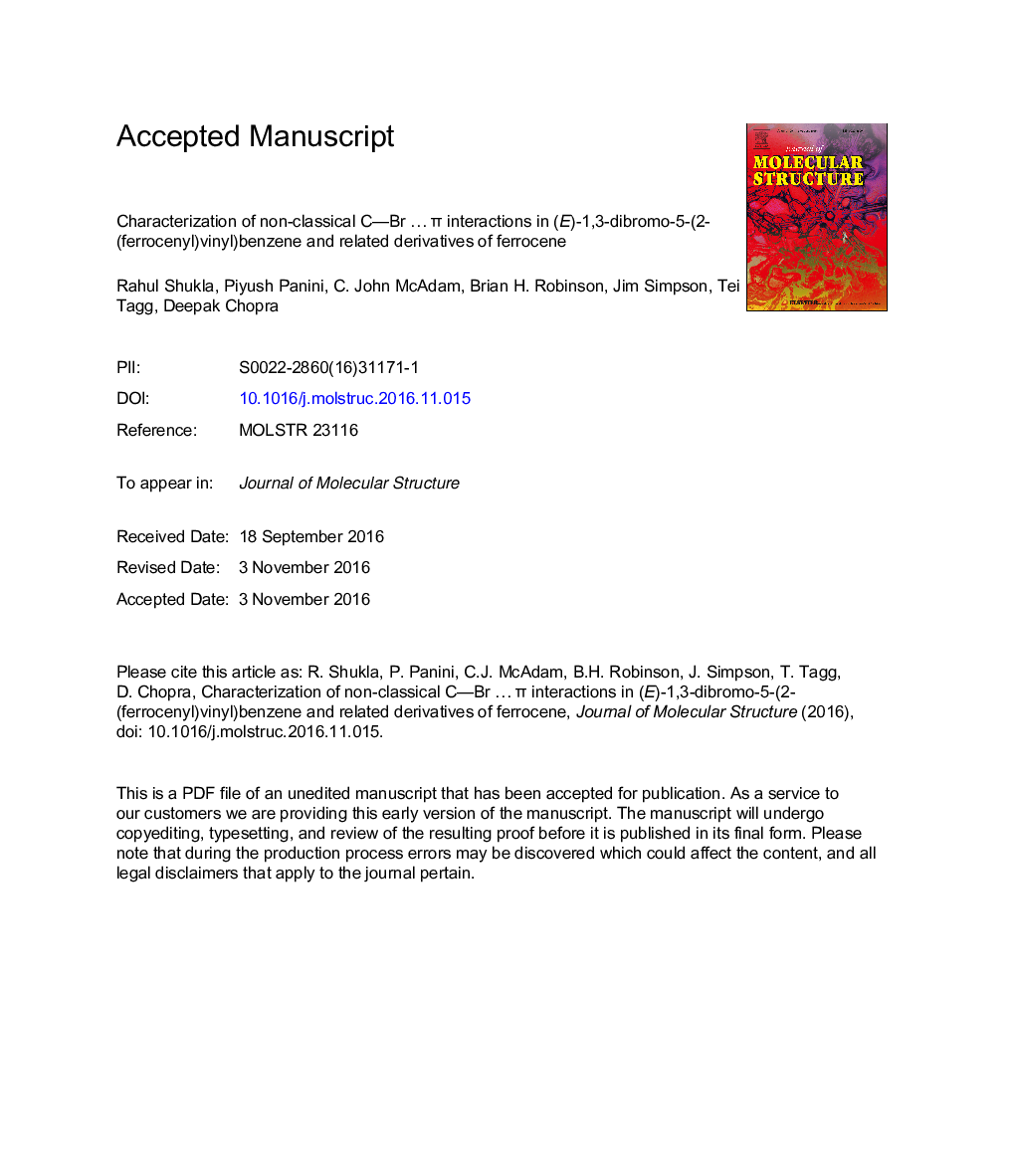| Article ID | Journal | Published Year | Pages | File Type |
|---|---|---|---|---|
| 5160842 | Journal of Molecular Structure | 2017 | 23 Pages |
Abstract
Amongst the halogens, the involvement of bromine atoms in various types of intermolecular interactions is comparatively the least studied. In this manuscript, we report the formation of CBrâ¯Ï interactions, with the Ï-rings being the cyclopentadienyl (Cp) rings of a ferrocene molecule in a newly synthesized compound (E)-1,3-dibromo-5-(2-(ferrocenyl)vinyl)benzene. We have also performed a detailed quantitative analysis on CBrâ¯Ï interactions observed in the synthesized molecule and in several related molecules found in the Cambridge Structure Database (CSD) showing the presence of these interactions. A topological analysis based upon QTAIM theory and electrostatic potential ESP mapped on the Hirshfeld surface of these molecules confirm that these interactions are better described as “halogen bonds” wherein the electropositive region (Ï-hole) on the Br-atom interacts with the electronegative region over the Cp-ring of the ferrocene. Further, the electronegative region on the bromine atom (perpendicular to the CBr bond) was observed to be involved in the formation of highly directional CHâ¯Br interactions with the â CBrâ¯H close to 90°. Thus the bromine atom is acting as both a “halogen bond donor” and “hydrogen bond acceptor” in the crystal packing with the two interactions being mutually orthogonal.
Related Topics
Physical Sciences and Engineering
Chemistry
Organic Chemistry
Authors
Rahul Shukla, Piyush Panini, C. John McAdam, Brian H. Robinson, Jim Simpson, Tei Tagg, Deepak Chopra,
